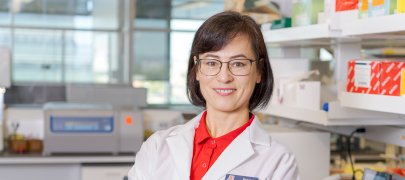
Researchers Develop New Tools to Predict Premature Birth, Neonatal Morbidity

Researchers from the University of Arizona College of Medicine – Phoenix and Indiana University School of Medicine have developed a new diagnostic tool to better predict the likelihood of premature birth and neonatal morbidity in the early stages of pregnancy, which may increase care and outcomes for both baby and mother.
Premature birth affects 1 out of 10 women in the United States and can lead to multiple complications in newborns. Until now, there were limited tools available to predict preterm birth and no tools to predict neonatal morbidity.

The new study, led by Dr. Patil and published in PLOS ONE, examined levels of progesterone metabolites in conjunction with patient demographic and obstetric history. The combination of these factors allowed researchers to predict, with a high degree of certainty, women who were more likely to have a very preterm birth. Very preterm birth, babies born before 32 weeks of pregnancy, often results in neonatal morbidity and mortality.
The investigation also identified which pregnancies would result in newborns with multiple complications, as premature birth is associated with substantial complications for the newborn. The study revealed a high correlation between at-risk pregnancies and newborns spending up to seven weeks longer in the neonatal intensive care unit (NICU) than the low-risk group.
“This is really an attempt to better understand what might happen to the newborn. When I see pregnant women, their concern is, ‘Will my child be able to come home with me or will my child need to stay in the NICU,’” said Dr. Patil, founder and CEO of Nixxi, a company focused on improving women’s health and pregnancy outcomes.
The study used plasma samples collected as part of the Building Blocks of Pregnancy Biobank at the Indiana University School of Medicine. For more than 11 years, the biobank has collected samples from pregnant patients in all trimesters, as well as during labor and delivery.
The testing is paired with individualized guidance on how to improve the health of the pregnancy. It is meant to be a tool to improve outcomes and empower positive change. Early identification of risks allows time to implement productive changes to improve health outcomes, such as increased activity, better diet and cutting back on detrimental behaviors.
“These discoveries about different progesterone metabolites and their roles in prediction and potentially prevention of spontaneous preterm birth are very exciting,” said co-author David Haas, MD, MS, vice chair of research for IU School of Medicine Department of Obstetrics and Gynecology. “While more research is needed, these findings are a significant step in helping physicians provide multidisciplinary, personalized care to improve perinatal outcomes for their patients.”
Other participating institutions include Indiana University School of Medicine, Valley Perinatal Services, Wake Forest University and Gaikwad Steroidomics Laboratory.
About the College
Founded in 2007, the University of Arizona College of Medicine – Phoenix inspires and trains exemplary physicians, scientists and leaders to optimize health and health care in Arizona and beyond. By cultivating collaborative research locally and globally, the college accelerates discovery in a number of critical areas — including cancer, stroke, traumatic brain injury and cardiovascular disease. Championed as a student-centric campus, the college has graduated more than 800 physicians, all of whom received exceptional training from nine clinical partners and more than 2,700 diverse faculty members. As the anchor to the Phoenix Bioscience Core, which is projected to have an economic impact of $3.1 billion by 2025, the college prides itself on engaging with the community, fostering education, inclusion, access and advocacy.


